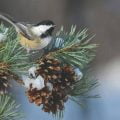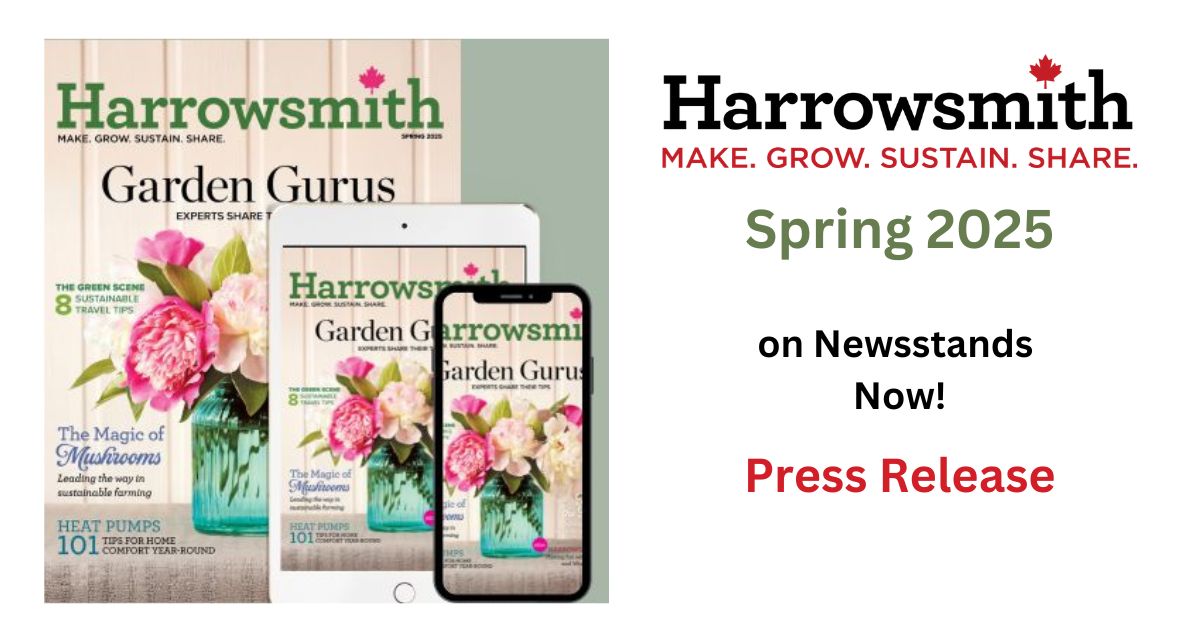Amidst snow’s soft embrace, we scatter seeds, offer fruit and hang suet, and like clockwork, feathered friends arrive. Their vibrant presence warms our hearts, a reminder that even in frosty silence, life’s beauty thrives.
By offering a variety of foods, you’ll attract and support a diverse range of birds, making your
winter days brighter with their cheerful presence
Feed Suet
Suet is a high-energy, animal fat-based food that is especially valuable in cold weather. Birds like woodpeckers, nuthatches, and chickadees relish this human-made treat. It’s a quick source of calories to maintain their body heat.
To make suet for birds, blend 1 cup of vegetable shortening and 1 cup of coconut oil until smooth. Mix 2 cups of birdseed, 1 tablespoon of unflavoured gelatin, 2 tablespoons of flour, and 1/3 cup of water. Combine, shape into moulds, chill, and hang for feathered friends to enjoy.


A habitat adorned with evergreens provides shelter for chickadees from the biting winds, while suet treats offer energy-rich morsels to sustain them. Sunflower seeds and dried mealworms are coveted delights.
Give Seeds & Nuts
Seeds are a staple for numerous birds during the cold months. These tiny packages of energy help them stay warm and nourished. Start with these varieties:
- Black-oil sunflower seed boasts a rich protein content that appeals to many bird species. Whether you’re hosting large or small avian visitors, this seed will surely delight them all.
- Safflower seed feeders attract Northern Cardinals, grosbeaks, and chickadees — and detract squirrels.
- Peanuts (in the shell or pieces) are another protein-rich choice for bird feeders and a favourite of blue jays and woodpeckers. Birds have a genuine penchant for peanuts, although they face stiff competition from other creatures.
- Nyger seed offers essential sustenance for winter birds, brimming with high energy fats. Its small size suits finches and smaller species, ensuring a reliable food source during cold months when natural food is scarce.
This winter wreath doubles as a bird feeder.
To make, mix birdseed, nuts, and dried fruit with gelatin. Press into a Bundt pan, add a string for hanging, and freeze until solid. Scatter more seeds on top, add water and freeze again. Hang it outdoors to provide a nutritious winter feast for feathered friends.


Tip for filling birdfeeders
Ensure you replenish your bird feeders daily during the winter season while offering a portion of seeds that birds can consume before sunset. This practice is particularly crucial in areas where raccoons, bears, deer, and other wildlife pose a challenge. By supplying only what your avian friends need, you deter nocturnal creatures from identifying your bird feeder as a convenient food source.

Northern cardinals endure winter by feasting on sunflower and safflower seeds in winter, relishing their high-fat content to stay warm and nourished. Their vibrant plumage brings colour to the snowy landscape as they maintain a territory and sing to stake their claim and find mates amidst the chill.

Blue jays, in winter primarily forage for acorns, seeds, and insects, supplementing their diet with berries, suet from bird feeders and peanuts as a favourite treat. They also engage in cache storing, hiding food to retrieve during colder months.

Sparrows (all 20+ species found in Canada) rely on seeds, grains, and suet to sustain them. They forage beneath snow cover and huddle in sheltered spots to conserve warmth, sharing their melodies while waiting for spring’s embrace.

Downy woodpeckers have a winter diet of insects, suet, seeds, and berries. They employ their strong bills to drum on trees and search for hidden insects while visiting bird feeders for supplementary sustenance in colder months.

American Robins adapt their diet in winter, primarily feeding on fruits like berries, crabapples, and other available fruit-bearing plants. These cold-weather foraging habits sustain them when insects are scarce.

Pine Grosbeaks are relatively uncommon, so when you see them, it’s a real treat! The northernmost portion of their range covers Newfoundland, Labrador, northern Quebec, northern Ontario, northern Manitoba, and northern Yukon. They primarily dine on a fruit diet, including mountain ash berries, crabapples, and other available fruiting trees.

Bohemian Waxwings are winter fruit enthusiasts. They feast on berries, crabapples, and even small fruits like cherries, often in large flocks.

Northern Mockingbirds, in winter, predominantly rely on a diet of fruits, including berries and small fruits. They also forage for insects when available, ensuring a varied diet for their winter survival.

Offer Fruit
In the winter, many Canadian birds rely on fruits like berries from shrubs and trees (learn more on page 25), which provide essential nutrients and a source of hydration when water is scarce. To offer additional fruit, provide whole apples and pears on a platform feeder or hanging from branches. For smaller birds, chop fruits like grapes, berries, and oranges into bite-sized pieces and scatter them on a suitable feeding surface where they can perch.


5 Ways to Welcome Birds All Year Around
- Have a water source. A heated bird bath in winter gives water for drinking and bathing during chilly weather.
- Provide shelter. Plant evergreen trees and shrubs that offer protection from harsh winds and potential predators. Birdhouses and roosting boxes can also become cozy retreats.
- Grow native plants. These varieties produce berries or seeds in winter to provide a natural food source.
- Be natural. To keep your avian visitors safe, avoid using pesticides and herbicides in your garden, which can harm birds and their food sources.
- Be patient. It might take a while for birds to discover your offerings, but once they do, your garden will come alive with their vibrant presence.
Happy birdwatching!
Jennifer Reynolds, our previous Editor-in-Chief, is a long-time authority in gardening, do-it-yourself projects, urban sustainability, parenting, placemaking and community matters. Her features and columns have been published in Canadian Living, Canadian Family, Gardening Life, House & Home, Globe & Mail, National Post, Toronto Star & more. Plus, her designs and expertise have been featured on dozens of HGTV, W Network and CTV shows.












